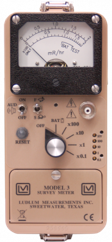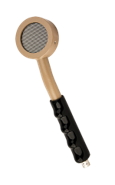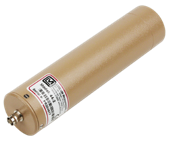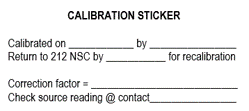- Homepage
- Departments
- Research Safety & Services
- Radiation Safety
- Radiation Monitoring Devices
Radiation Monitoring Devices
- Pest Management
- Fire Plan Review and Inspection
- Building Codes Enforcement
- ADA Assessment
- Applicable Building Codes
- Building Emergency Coordinators
- Certificate of Completion or Occupancy
- Chartfield Form Codes Permits
- Inspections
- Permit Application Process
- PERMIT APPLICATIONS AND FORMS
- Permit Fee Schedule
- Permit Instructions
- Plan Submittal Guidelines
- Temporary Structures on Campus – Including Tents
- Insurance and Risk Management
- Occupational Medicine
- Industrial Hygiene & Occupational Safety
- Ergonomics
- Camps
- Drones/UAS
- Building and Contents
- Boating & Dive Safety
- Automobile
- Report Lab Closeout
- Radiation Safety
- Hazardous Waste Management
- Chemical and Lab Safety
- Standard Operating Procedures
- Safety Surveys
- Peroxide Forming Compounds
- New Labs, Moving Labs & Closeouts
- Nanoparticles
- Minors and Visitors in the Lab
- Lessons Learned
- Lab Ventilation
- Lab Signage
- Lab Safety Manual
- Hydrofluoric Acid
- Greenhouse Safety
- First Aid Kit Info
- Equipment Purchase Approval
- Equipment Decontamination
- DEA – Controlled Substances
- DBPR – Pharmaceutical Products
- Cryogens
- Compressed Gas
- Chemical Storage and Management
- Chemical Spills
- Chemical Safety Information
- Chemical Inventory
- Chemical Hygiene Plan
- Chemical Exposures
- Acids That Deserve Special Attention
- Biological Safety
- Vaccination Policy for Research Personnel
- Shipping and Transport of Biological Materials
- Select Agents
- Research Involving Flying Insects
- Recombinant & Synthetic Nucleic Acids
- Plant Research
- NIH Guidelines Flowchart
- BloodBorne Pathogen Program
- Biohazardous Waste Disposal
- Biohazard Project Registration
- Autoclaves
- Acute Biological Toxins
- Lab Safety & Research Services
- Clinic Safety
- Chemical Safety
- Animal Research Safety
Radiation survey meters are required in most labs working with radiation. There are several types of survey meters, and care must be taken to select one sensitive to the radiation in use. One common isotope that requires special consideration is Tritium (H-3), which emits a low-energy beta that is not detectable by most handheld survey meters.
Some common types of radiation monitoring devices include:
-
Geiger Muller (GM)
- Best for: Beta Sources (e.g. P-32, S-35, Tc-99)
-
Ionization Chamber
- Best for: Medium to high dose rate Gamma/X-Ray measurement
-
Sodium Iodide (NaI)
- Best for: Gamma sources (e.g. Na-22, Cs-137, I-125)
-
Liquid Scintillation Counter (LSC)/Gamma Counter (GC)
- Best for: Tritium contamination detection, radiation quantification
Choosing a meter
Meters are typically sold in two parts, a meter and a detector (or probe). Many meters and detectors are interchangeable. For example, one of the most popular meters is the Ludlum Model 3. The Model 3 can be equipped with different detectors based on the needs of the lab, such as the Model 44-9 pancake GM detector which is good for beta sources or the Model 44-3 NaI detector for gamma sources.

Ludlum Model 3

44-9 GM Detector

44-3 NaI Detector
Some common meter vendors/manufacturers include:
If ordering a new meter, please contact the Radiation Safety Office. Certain meters cannot be calibrated on campus and would need to be serviced by an outside vendor. Additionally, the new meter will need to added to the EH&S database.
Radiation meters are required to be calibrated:
- Every nine months for non-human use
- Every six months for human use
EH&S offers calibrations and minor repairs for most meters. Every meter should be labeled with a calibration sticker which will state the due date of the next calibration.
Meters are collected from labs as their due date approaches. Please do not use a meter if it is outside of the calibration date. If your meter has become out of calibration, notify the Radiation Safety Office.



